Not every seat is for everyone to use as some seats are reserved. The fastest way to know where these reseved seats are, is to look at the ground in front of the safety screen doors. The left triangle shows a figure with a cane, indicating reserved seating. At both ends of every subway car, and at both sides, are special reserved seating for those who are pregnant, have mobility issues, and/or are traveling with small children. As there are normally four sets of doors per car, this means the first car, which is indicated by the -1, and the last car, which is indicated by -4. This map shows we are standing to the right of doors 3-4, which means the reserved seating will be on our right once entering the vehicle. You’ll see similar reserved seating in city buses as well.
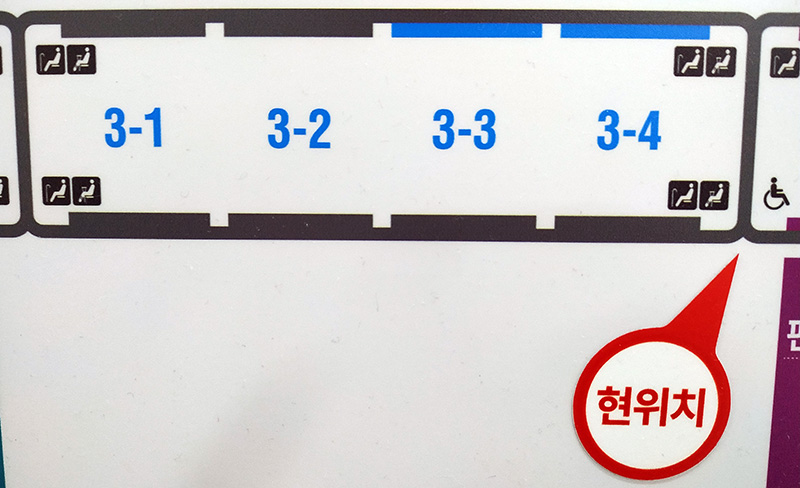
While it is rare for there to be more reserved seating than those at both ends of a car, this is wholly depending on the operator of the line you are riding. For example, some cars in a train set on Daejeon line 1 have reserved seating only at the ends, while another car will have additional reserved seating in the larger middle area.
In the image below we see 3-1, which means we are standing by the third car and the first set of doors. If we enter here, all the seats on the left will be reserved. As these seats are reserved for people with mobility issues, they are not going to exit the vehicle quickly. If you want to grab a general seat, it is best not to wait by their side of the car but enter by a different door.
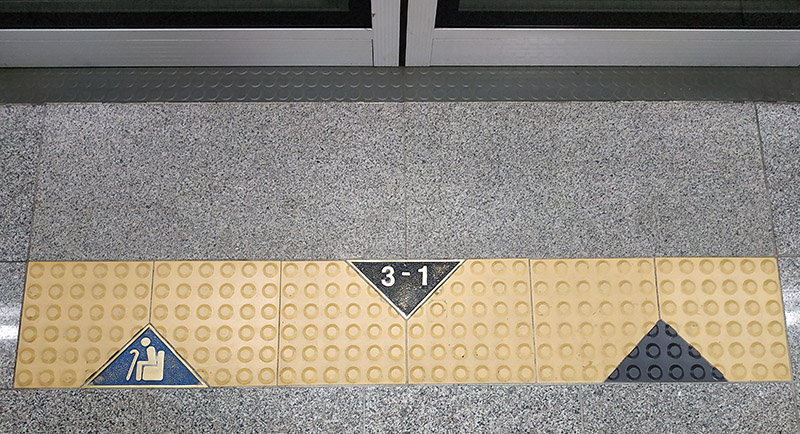
Note the difference with the previous image and the image below. The above image has an icon of someone with a cane within the triangle on the ground. The below image shows an individual in a wheelchair and is not within the triangle. This below image is to indicate there is less reserved seating here, as one of the benches has been removed so there is adequate room for someone in a wheelchair to board the train and park next to the wall. Glance again at the image at the top of this page; the bottom right side in car 4 has the wheelchair logo to indicate several seats have been removed so a wheelchair can have a place to stay. In the image below, there is also a logo for women who are pregnant.

Here is an image from the connecting tram under Incheon Airport, carrying passengers between Terminal 1, the center island, and Terminal 2. In this instance, the seating is bench style and is the same color as all other seating in the vehicle.
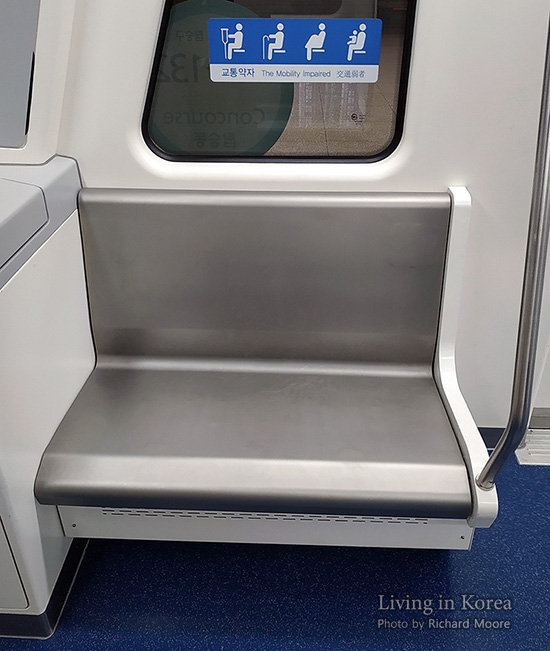
For subway systems, the seats are more defined and are covered in a flame retardant fabric. The color of the fabric on reserved seats is frequently unique from that of standard seating. In this instance, we can see the reserved seating in the Daejeon subway is yellow in color while the general seating in blueish green. These reserved seats are also in groups of three, while the seats in the middle of the cars are in much larger groups; usually seven.
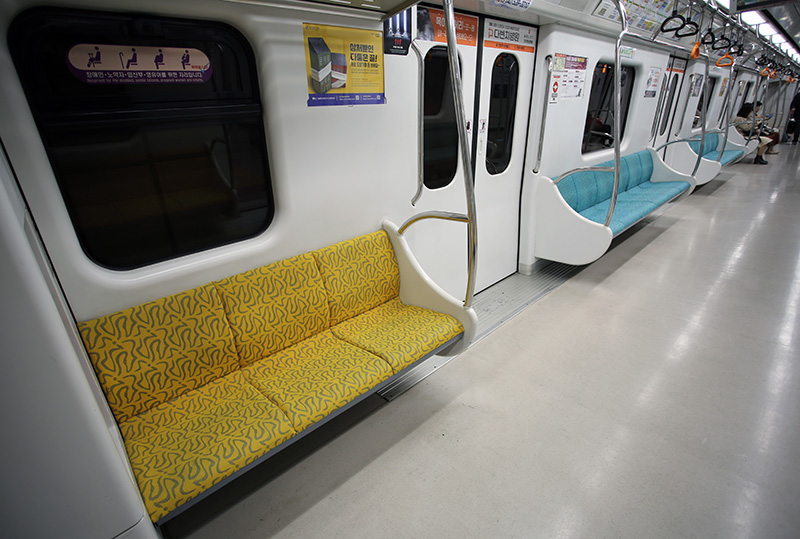
Fabric color aside, the biggest giveaway is a sticker on the glass which provides a visual guide for who is permitted to sit here. Depending on the line operator, there may or may not be words that accompany the pictures, but it is to be expected that there will be images. The stickers are rather standardized but there are some minor differences among the various operators. Here are several examples.
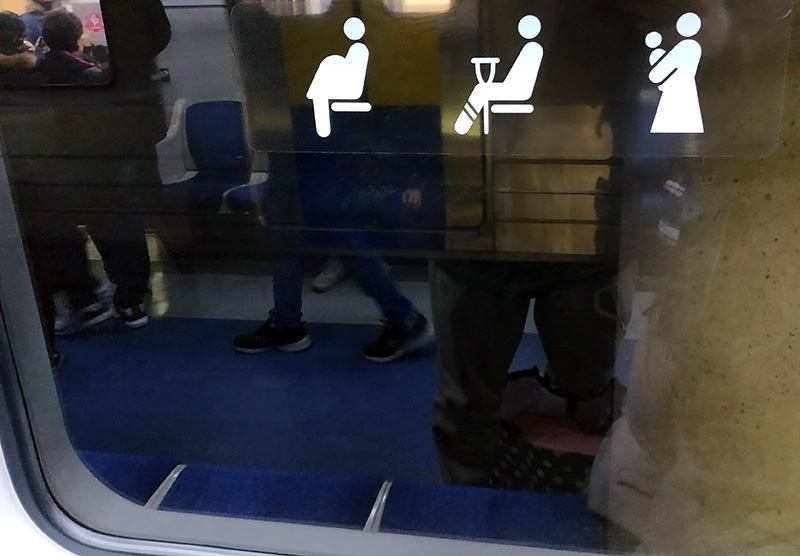
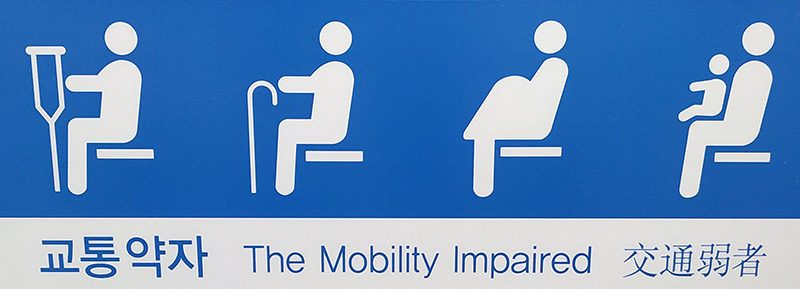


Previous to the installation of these reserved seats at both ends of nearly all cars, all seats were first come first served. People with mobility issues never did well in that situation, but the culture was very kind to them as people would often give up their seats to the elderly, those with injuries, or some women who were very clearly pregnant. As this group of people now has seating reserved exclusively for them, the culture has changed and so people are less likely to give up their seats.
To read more about pregnant seating, which could be at the ends of the cars with the elderly or mixed among general seating, click here.